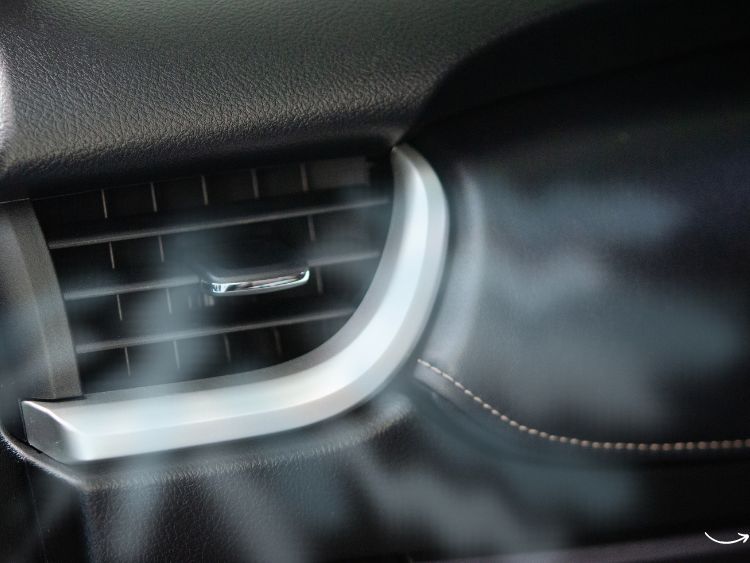Imagine driving on a scorching summer day, and your car’s air conditioning decides to quit. Nightmare, right? Most of us take car air conditioning for granted until it fails. Understanding your car’s air conditioning parts can save you from sweating through your shirt and costly repair bills. In this article, we’ll dive deep into the essential components of a car air conditioning system, how they work, and why they’re crucial for a comfortable drive.
What Makes Up Your Car’s Air Conditioning System?
Your car’s air conditioning system isn’t just a magical box that blows cold air. It’s a complex network of components working together to keep you cool. Here are the main parts you should know about:
1. Compressor
The heart of your car’s air conditioning system is the compressor. It pressurizes the refrigerant and circulates it through the system. Think of it as the engine of your AC. Without a functioning compressor, the refrigerant can’t move, and the entire system grinds to a halt.
2. Condenser
The condenser is like the radiator of your AC system. It converts the high-pressure, high-temperature refrigerant vapor into a liquid. Located at the front of your car, it relies on airflow from the driving or a fan to cool the refrigerant.
3. Evaporator
The evaporator is hidden inside the dashboard and is responsible for absorbing heat from your car’s interior. As the cold refrigerant flows through it, the evaporator cools the air that passes over it, and voila – you get cool air blowing through the vents.
4. Expansion Valve or Orifice Tube
This component controls the flow of refrigerant into the evaporator. It converts the high-pressure liquid refrigerant from the condenser into a low-pressure liquid, making it possible for the evaporator to absorb heat efficiently.
5. Receiver-Drier or Accumulator
The receiver-drier (in systems with an expansion valve) or accumulator (in systems with an orifice tube) acts as a filter and storage tank. It removes moisture and contaminants from the refrigerant, ensuring the system stays clean and efficient.
How Do These Parts Work Together?
Understanding how these parts work together can help you grasp why your AC might be acting up. Here’s a step-by-step look at the process:
- Compression: The compressor pressurizes the refrigerant gas, turning it into a high-temperature, high-pressure vapor.
- Condensation: This vapor moves to the condenser, where it dissipates heat and condenses into a high-pressure liquid.
- Expansion: The liquid refrigerant flows through the expansion valve or orifice tube, where it turns into a low-pressure liquid.
- Evaporation: This low-pressure liquid moves through the evaporator, absorbing heat from the car’s cabin and turning back into a gas.
- Circulation: The refrigerant gas returns to the compressor to repeat the cycle.
Common Problems and Troubleshooting
Even the best car air conditioning systems can develop issues. Here are some common problems and how you can troubleshoot them:
1. Weak Airflow
If your AC’s airflow is weak, it might be due to a clogged cabin air filter, a problem with the blower motor, or blocked vents. Replacing the air filter and checking the vents can often solve this issue.
2. No Cold Air
When your AC blows air, but it’s not cold, the refrigerant level might be low, or there could be a problem with the compressor or evaporator. Recharging the refrigerant or checking for leaks can be a good first step.
3. Strange Noises
If you hear unusual noises when your AC is running, it might be due to a failing compressor or debris in the system. It’s best to get a professional to check it out to avoid further damage.
4. Bad Smells
Foul smells coming from your AC vents usually indicate mold or bacteria in the system. Cleaning the evaporator and changing the cabin air filter can help eliminate these odors.
Maintaining Your Car’s Air Conditioning System
Regular maintenance can keep your car’s AC running smoothly and prevent major repairs. Here are some tips:
- Check the Refrigerant Level: Low refrigerant can strain the system and lead to bigger problems. Top it off as needed.
- Replace Cabin Air Filters: A clean filter ensures good airflow and reduces strain on the blower motor.
- Clean the Condenser: Remove debris and dirt from the condenser to ensure proper airflow and heat dissipation.
- Run the AC Regularly: Even in winter, running the AC for a few minutes can keep the system lubricated and prevent seals from drying out.
Frequently Asked Questions About Car Air Conditioning Parts
1. Why is my car’s AC blowing hot air?
Your AC might blow hot air due to low refrigerant levels, a faulty compressor, or a problem with the condenser or evaporator. Checking for leaks and ensuring the compressor is working properly can help diagnose the issue.
2. How often should I service my car’s air conditioning system?
It’s a good idea to have your car’s AC system serviced every year or two. Regular check-ups can catch small issues before they become major problems.
3. Can I recharge the AC refrigerant myself?
While it’s possible to recharge your car’s AC refrigerant yourself, it’s often best left to professionals. They can ensure the correct type and amount of refrigerant is used and check for any leaks.
4. What does the AC compressor do?
The AC compressor pressurizes the refrigerant and circulates it through the system, making it a crucial component for cooling your car’s interior.
5. Why does my car’s AC have a bad smell?
A bad smell from your AC can be due to mold or bacteria in the system. Cleaning the evaporator and replacing the cabin air filter can usually resolve this issue.
Summary
Your car’s air conditioning system is a complex but essential part of your vehicle, especially during hot weather. Understanding the main components – the compressor, condenser, evaporator, expansion valve, and receiver-drier – can help you troubleshoot problems and keep the system running efficiently. Regular maintenance, such as checking refrigerant levels and replacing air filters, can prevent issues and ensure you stay cool and comfortable on the road. Remember, when in doubt, it’s always best to consult a professional to handle complex repairs and maintenance tasks. Stay cool and happy driving!



